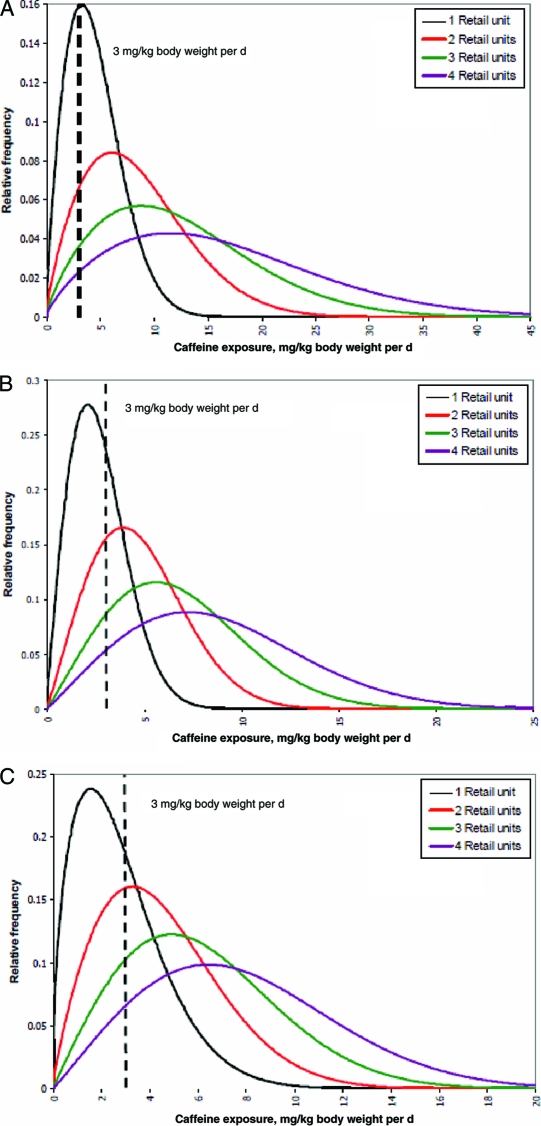FIGURE 2.
A, Estimated distribution of caffeine exposure for children (5–12 years old) after the consumption of 1 to 4 retail units of energy drinks or energy shots.46 B, Estimated distribution of caffeine exposure for teenagers (13–19 years old) after the consumption of 1 to 4 retail units of energy drinks or energy shots.46 C, Estimated distribution of caffeine exposure for young males (19–24 years old) after the consumption of 1 to 4 retail units of energy drinks or energy shots.46 Caffeine-exposure units are mg/kg body weight per day. An adverse effect level of 3 mg/kg body weight per day is shown as a basis for risk evaluation. The area under the curves to the right of the adverse-effect lines represents the proportion of consumers potentially at risk from adverse effects of caffeine or the probability of a random consumer exceeding the adverse-effect level. Reproduced with permission from David Crowe, manager of consumer communications for the New Zealand Food Safety Authority.

